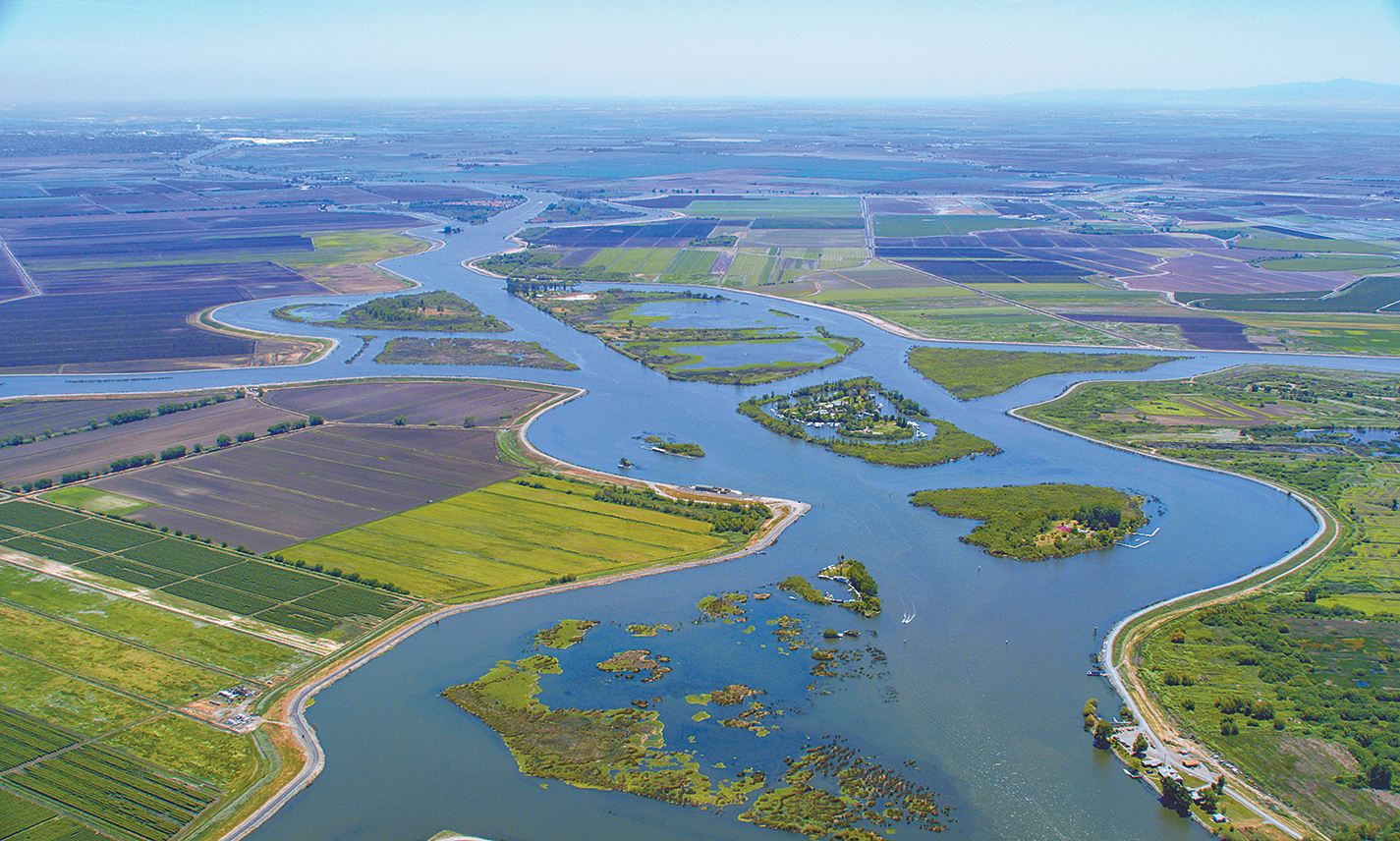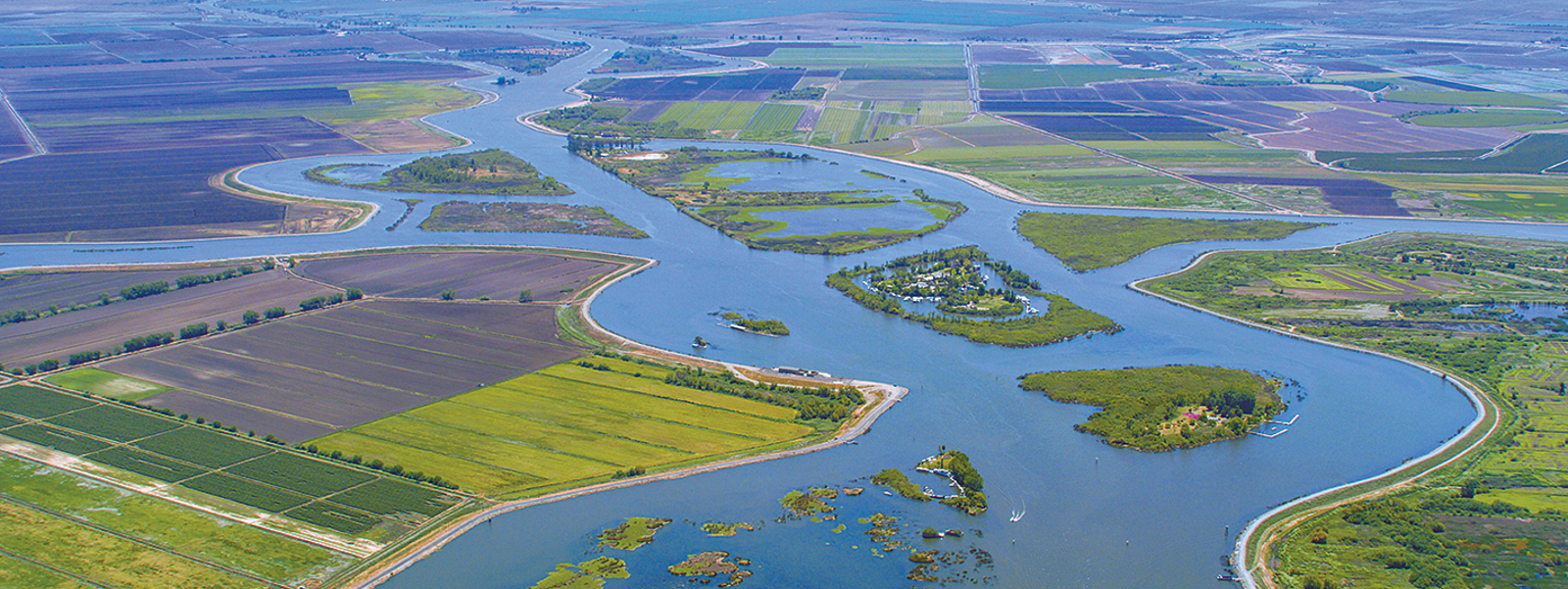Commentary: Can California reject a 'scarcity mindset' on water?

An agriculture, business and water-policy coalition is seeking a pilot project to study diverting Sacramento-San Joaquin Delta floodwaters to boost groundwater recharge for farms and cities.
Photo/California Department of Water Resources


By Edward Ring
During a 2022 press conference outside a desalination plant under construction in Antioch, Gov. Gavin Newsom signaled a potential tectonic shift in how California addresses its water challenges. In a hopeful sign, Newsom said Californians need to move “away from a scarcity mindset to one more of abundance.”
Then last March, the governor issued an executive order to make it easier for local water agencies to capture runoff from that season’s epic storms to recharge aquifers. In November, he moved to shorten the review process for developing the planned Sites Reservoir north of Sacramento. These are welcome actions, but much more is needed.
Without more investment and regulatory relief, Californians face a future of chronic water scarcity. Our system of water storage and distribution is in trouble. We have depleted aquifers, nearly empty reservoirs on the Colorado River, and a precarious network of century-old levees that are one big earthquake away from catastrophic failure. Then there’s always the next severe drought.
Even if the governor aggressively pushes for more investment in water supply infrastructure and more regulatory relief so projects can go forward, the state is again staring down a budget deficit. Bonds to fund water infrastructure projects are going to have a hard time getting approval from voters already overburdened with among the highest taxes in America.
While creativity is demanded, Sacramento’s only consistent legislative solution is for us to use less water.
In one egregious example, lawmakers in 2022 passed Senate Bill 1157 to restrict indoor water consumption to 42 gallons per person per day, and ration water for outdoor landscaping to conserve up to 450,000 acre-feet per year by 2030. Yet an independent analysis said implementation, enforcement and needed system upgrades exceed the value of water savings, costing $7.4 billion over 10 years.
To put things in perspective, California delivers about 7.5 million acre-feet for urban consumption and about 30 million acre-feet for farm irrigation. Even in dry years, another 25 million acre-feet are diverted and used to maintain aquatic ecosystems; in wet years, that number can soar to more than 60 million acre-feet.
Spending money to enforce water rationing on California’s urban residents will not deliver new water. But it will have a divisive impact. Resentful urban residents will demand that farmers, who use much more water than cities, make proportional cuts.
There is a better approach: urban water agencies and farm water agencies working together to create abundant water for everyone. The potential implementation costs of SB 1157 may be enough to fund a fleet of desalination plants with 450,000 acre-feet per year of perennial output. But it is in the Sacramento-San Joaquin Delta where that money could be put to transformative use.
Imagine allocating a mere 200 acres on an existing delta island to divert up to 30,000 acre-feet per day into aquifer storage for subsequent use by farms and cities. Because these islands are below sea level and protected by levees, infiltration beds of gravel covering perforated water-harvesting pipes could be built, with a parallel levee constructed to form a channel. Once that work is complete, openings could be cut into the existing levee on both ends of the new channel to allow water to flow through.
Extensive study has already been performed on this proposal, promoted by the Water Blueprint for the San Joaquin Valley, a “coalition of San Joaquin Valley community leaders, businesses, water agencies, local governments and agricultural representatives.” The next step is to build a $1 million pilot project to serve as final proof of concept.
The total project cost is around $5 billion for an infiltration channel, settling ponds, pumps and new aqueduct transport to aquifer storage with interties to major existing north-south aqueducts. During storm events, even in dry years, it would be possible to divert and store 2 million acre-feet annually and much more in wet years. The excessive flow through the delta during California’s atmospheric rivers is well documented. This is hazardous, wasted floodwater. Diverting only an additional fraction of it will yield millions of acre-feet per year.
Like all hypothetical ideas with great promise, its proof-of-concept pilot project should be built and tested immediately.
A fish-friendly delta diversion project of this magnitude could be part of a larger project to harden the delta levees against earthquakes and severe storms. Bringing urban and agricultural water districts together to seriously evaluate a new proposal to divert massive quantities of storm runoff from the delta may require the power and charisma of the governor’s office.
Newsom, who seems to understand the problem in calling on us to abandon a “scarcity mindset,” has a tremendous opportunity to make that a reality.
(Edward Ring is a senior fellow with the California Policy Center and author of the “The Abundance Choice: Our Fight for More Water in California.” He may be contacted at ed@edwardring.com.)




